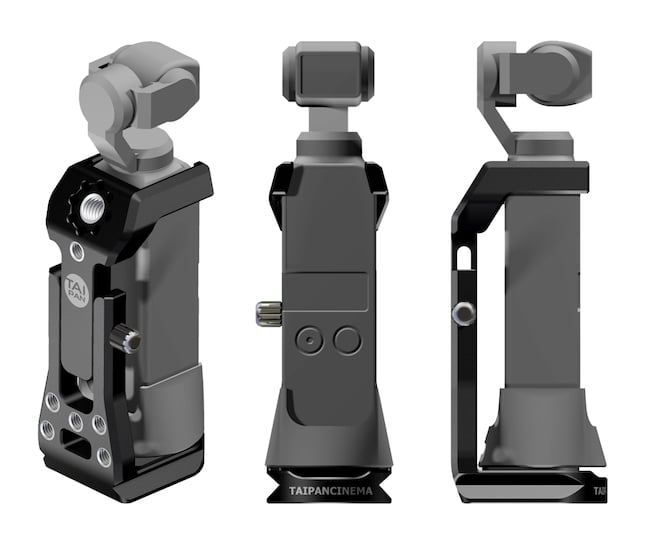
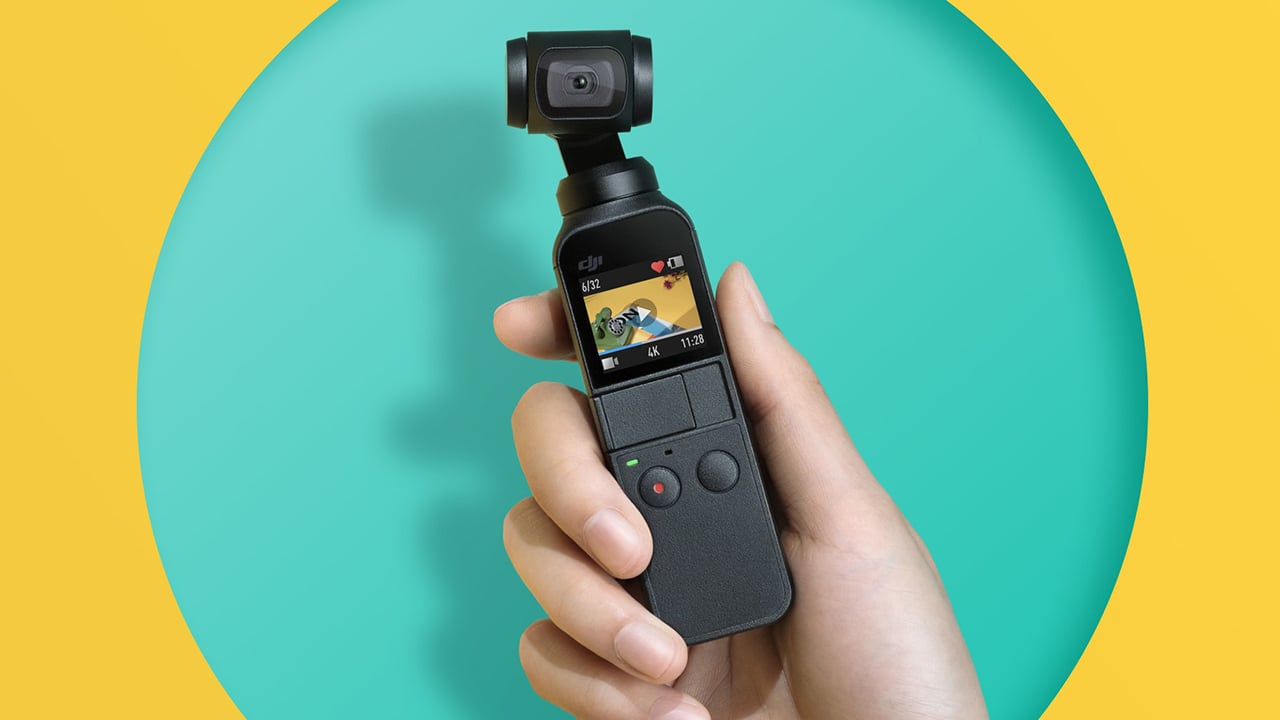
What do you get when you apply the construct of a 3 axis hardware stabilized gimbal with a 4K 60p capable pocket camera ? You obtain a device usable in almost all shooting situations and ready to operate in seconds.
The basic camera out of pocket
I find reviews which read along the lines “this is the product and see how wonderful it is,” disconcerting. Often, this approach is hype, but this is not so with the OSMO Pocket from DJI. I discovered a game changer, and great product. If there’s one word which best describes DJI’s approach to creating the OSMO pocket, the word is innovation. There are many videos about the OSMO Pocket online, but none of them give you an idea as to the device’s exact size. Allow me to be clear – The camera is small and well balanced. This gimbal cam fits comfortably in hand and can be carried in most people’s pockets and purses. The OSMO is not a heavy device, yet it’s quite weighty for its minuscule size. Coming in at 116 grams, the device is not so light you will have difficulty getting steady hand held shots various situations.
The little OSMO’s weight and balance is mainly do to an internal rechargeable battery running the entire length of the lower stem. The lower handle contains the miniature screen, control buttons, USB-C side interface, with a second USB C located on the bottom end along with two miniature microphone holes. The internal battery is an 875 mAh LiPo type rechargeable delivering 7.7 Volts delivering 6.738 Whr’s of energy, and is non removable. I am obtaining over 2.5 Hrs of running time on my OSMO here in the cold weather conditions of early Spring (Circa 45 degrees Fahrenheit) on the Northern tip of Vancouver Island’s Canadian Wilderness. This shooting time is obtained while recording 4K at 24p.
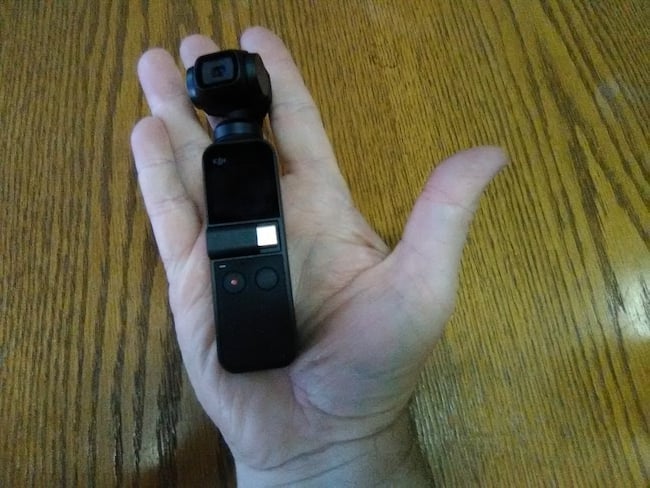
The OSMO pocket camera’s particulars
The camera of the OSMO is no slouch in terms of capability. The lens is a prime f/2.0 covering an 80 degree field of view with a 1/2.3 inch image sensor behind it. There is no iris in the lens. Correct exposure is obtained through the control of shutter speed and ISO. The shutter speeds range from 8 seconds to 1/8000th of a second. The camera has shooting speeds ranging from 24p, 25p, 30p, 48p, 50p, and even a full 60p possible at 4K (The camera also can shoot these speeds at FHD). This 60p shooting capability is missing from many other 4K pocket cameras considerably more expensive, such as the much lauded Sony DSC RX 100 MK V for example.
I have done several shooting tests with the OSMO at 60p. The camera gets quite warm, but does not overheat and shut down after 5 minutes like my RX100 MK V! I have to give my compliments to DJI’s engineers for this achievement, since the OSMO is a much smaller sized device, yet only has passive cooling. It rains often here in Canada’s only Boreal Rain Forest Region, and I have managed to get the OSMO moderately wet, yet it continues to operate nominally and deliver excellent quality images.
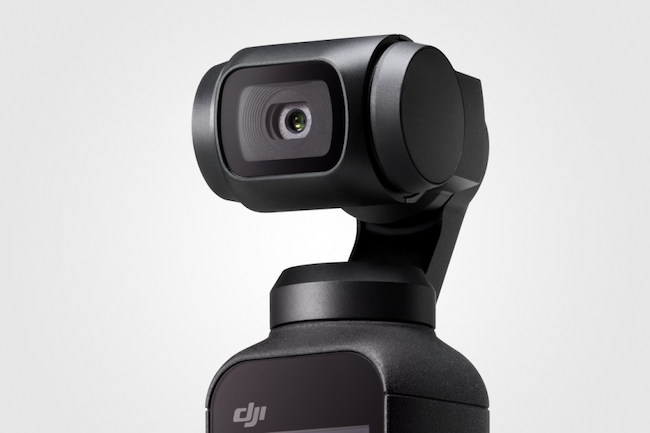
Image quality
I examined the image at both fine and super fine modes. My tests were made based on as close to real world shooting situations as I have encountered on various video production contracts. The OSMO Pocket is equipped with a prime lens, and I used Polar Pro combination ND/Polarizing filters to get bright sunshine on the beach shots down to 1/50th of a second shutter with a base ISO of 100. The results at 4K 24p and 60p are quite good. The images are surprisingly free of artifacts. Colour balance looks to be quite natural straight out of the camera. Next I filmed in a church. Churches have a tendency to be dimly lit, and a more revealing test of a low light capability. I put the OSMO 10 feet away from the subject and found the image quality quite clean in the blacks and highlights. Next I shot in a hotel lobby with decidedly mixed lighting. The results were equally good with accurate colour reproduction and no noticeable artifacting.
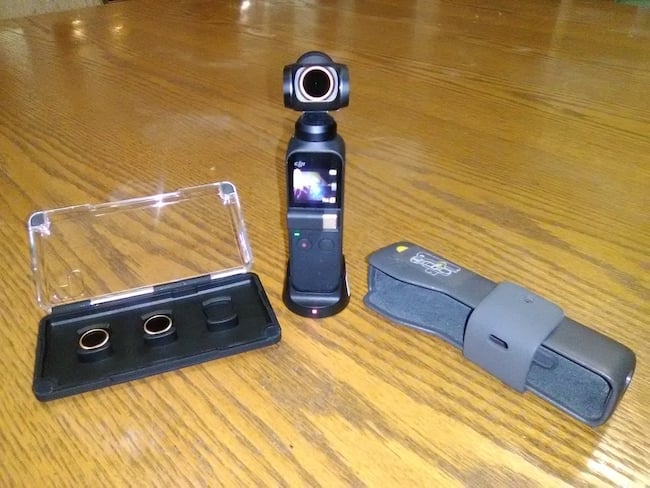
3 Axis Hardware Gimbal Performance
You may wonder, how well does the 3 axis stabilization actually work? Again, I need to be clear this gimbal produces incredibly fluid, smooth, and steady images. The subject follow tracking works remarkably well. If you are hand holding the device, no matter how shaky you may get, the end result is a steady shot. DJI has released four firmware updates at time of writing which have fine tuned focus tracking precision, stabilization, and exposure accuracy in auto mode. Other improvements to audio recording quality, the ability to enter into pro mode from the camera screen, and the addition of a cinema style log gamma shooting mode have been added in firmware updates.
Audio capabilities
The in camera audio is surprisingly good. (Audio was set to automatic. There is Low, Mid, and High settings as well). The OSMO Pocket was designed from the ground up to accept an external 3.5 mm TRS microphone input via a USB-C dongle. In my honest opinion, this elevates this camera above others aimed at the consumer market. The possibility exists for the use of professional audio adapters, such as the Beachtek DXA Micro Pro with the OSMO Pocket. The DJI USB-C microphone adapter is not yet available for testing at time of writing.
DJI accessory kits & other after market products
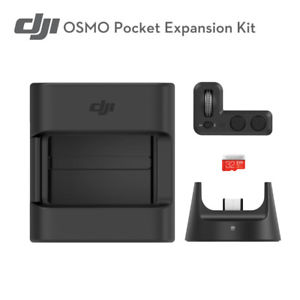
There are many after market products now available for this device. I purchased my OSMO Pocket from DrDrone.ca . Ali at Dr. Drone supplied me with the DJI OSMO Pocket Accessory Kit to help fully evaluate this device. Also, thanks to Paul Maloney at PolarPro.com, who have generously supplied me with their Cinema Series ND and Combo ND/Polarizing filters, along with other accessories to assist in this review. The accessory kit consists of three pieces – A Wifi/Bluetooth base, a side mounting thumb wheel control, and an action mount. The WiFi base enables the use of a cell phone without having to physically mate the OSMO Pocket to its side. The OSMO Pocket was designed to plug into your cell phone via it’s side USB-C adapter, but if you own a cell phone equipped with a mini USB interface, then you won’t be able to connect the OSMO directly to your phone to use the DJI MIMO app.
Where does the OSMO pocket shine?
What I found impressive was how fast you could setup the OSMO to perform complex motion controlled time-lapse sequences. By using the WiFi base and the MIMO phone application, I could program up to four point camera moves, exposure interval and duration I wanted to film the shot for, manually set shutter speed and ISO, and be able to hit record in one minute. Clearly, the OSMO Pocket was targeted at a consumer market, yet this instrument is useful to any news, documentary, or independent film maker, where immediate grab and shoot is required. In a future article I hope to review the first aluminum cage for the OSMO Pocket from Taipan Cinema Tools. The more I use the OSMO Pocket, the more shoots I can find for it to be useful on.
The OSMO pocket retails for £329.
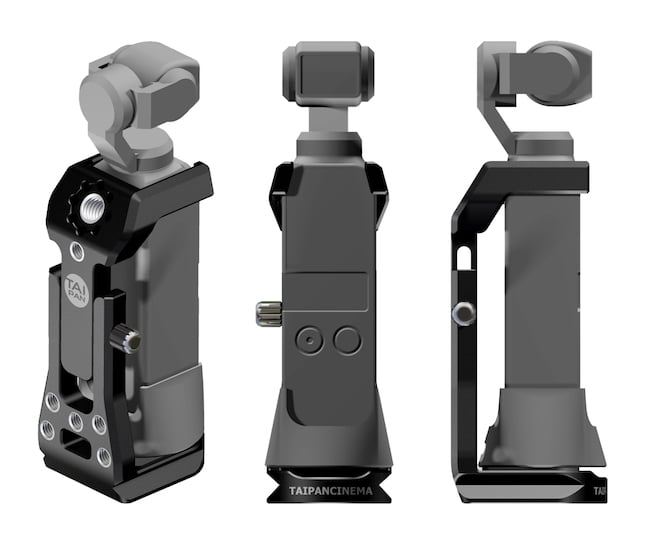
Tags: Production


Comments